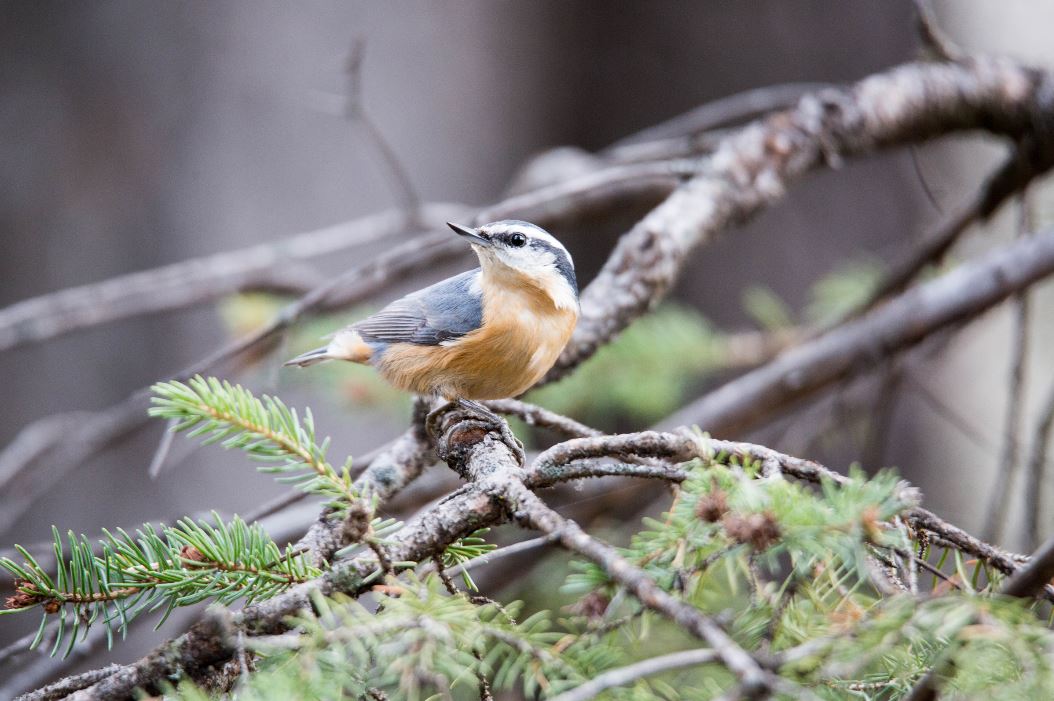Migration most dangerous time for birds; populations decline in state, U.S.[8:38 PM]
MORGANTOWN — Bird populations are declining nationwide and in West Virginia.
Dr. Christopher Lituma, a certified wildlife biologist with the West Virginia University Davis College, Division of Forestry and Natural Resources, said since the 1960s the United States has lost two-thirds of its bird population.
“The riskiest time of the year for birds is during migration,” he said.
Lituma said birds like hawks, vultures, water fowl, songbirds and shorebirds that spend the spring and summer months in northern states like West Virginia migrate to warmer climates in the fall.
“Other migratory birds pass through West Virginia from northern Canada and the Arctic Circle,” he said. “Many of them continue on to the tropics, Central America, and as far as Argentina.”
Lituma said some local birds travel great distances in the fall.
“The Bobolink is a pasture bird that breeds here, especially in the higher elevations, and migrates 6,000 miles to Argentina,” he said.
Lituma said another bird, the Wood Thrush, one of the first heard songbirds in spring, flies 2,000 miles to South America.
“Migration is stressful. Birds put on fat as they move south. Some stop to refuel, and some put on enough fat to fly the entire distance without stopping,” he said.
Lituma said the Blackpoll Warbler flies nonstop, 1,000 miles over the open ocean to a Caribbean island.
The Blackpoll Warbler is not the only distance flyer. He said the Ruby Throated Hummingbird travels nonstop from West Virginia across the Gulf of Mexico to its winter grounds.
“Many of West Virginia’s forest birds migrate to South America and the Caribbean,” Lituma said.
He said, sometimes, local bird watchers are treated to unusual visitors.
“A couple of years ago we had five Snowy Owls in the state,” Lituma said. “Snowy Owls breed in the Arctic tundra, they eat lemmings and, if they have a successful breeding season, some of the young move further south in search of food.”
He said one of the owls was struck by a car and taken to the Avian Conservation Center of Appalachia, where it recovered.
“Both myself and the birding society were very excited about the owls,” Lituma said.
He said he took two trips to where the owls were reportedly sighted and finally saw one of them.
Lituma said not all migrations are long distance. There are also altitudinal migrations.
Altitudinal migration is a short-distance migration from lower altitudes to higher altitudes or vice versa.
“During summer a bird might breed in Dolly Sods or other high elevations then come down the mountain. For example the Red Breasted Nuthatch stays in Morgantown during winter and goes to Coopers Rock during the summer,” he said.
Lituma said migrating birds meet many obstacles and dangers along the way to their destinations, like cell phone towers, wires, and glass and windows in buildings.
He said the reflection in glass often looks like a continuation of the outside.
Lituma said a good way to protect birds is to break up the reflection or by adding curtains.
“It’s estimated that 6.6 million birds are killed by hitting cell towers and from 365 million to 900 million killed by hitting windows,” he said.
Lituma said there are ways to help migrating birds.
Bird feeders are a good option. Hummingbirds will come to feed during migration. Sugar and water only, no red dye.
Be aware of big glass windows and keep them covered during bird migration.
Keep cats inside, especially in rural areas with a lot of woodland covering. Birds are tired, making them easy prey for predators.
Hannah Clipp, a doctoral student in wildlife and fisheries resources at WVU Davis College of Agriculture, Natural Resources and Design, said in a press release: “When so many birds are migrating, it can really help to turn off lights at night to avoid attracting birds to urban areas, which contain a lot of hazardous conditions, including buildings into which they can collide.”
Lituma said during intense bird movements in the spring and fall the 911 memorial in Pennsylvania turns off its lights.
He said bird watching is a good hobby for people staying home during the pandemic. He said it is a hobby that helps participants become attuned to the environment.
Lituma said the only equipment required is a field guide for birds and a good pair of binoculars.
“Just put out a bird feeder and see what comes to it,” he said.
TWEET @DominionPostWV




